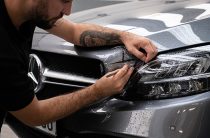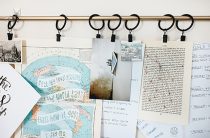Decluttering is the process of removing excess items from your life. This can mean anything from getting rid of old clothes to donating old papers to recycling old electronics. It might sound like a strange idea, but it has some great benefits. Even electronics gadget can contribute to air pollution and it needs to be collected by skip bins Christie’s Beach.
So why would you want to do this? Here are some benefits of decluttering in minimalism perspective:
1. Reduce stress
2. Become happier
3. Save money on storage costs
4. Organize everything!
5. Get inspired by having less stuff around!
Decluttering is the process of removing the clutter from our homes and possessions. This is a very simple concept that can have huge benefits. Most people are surrounded by stuff that is either taking up space, or that is worthless. When you declutter, you are able to focus on what is important to you. You can also make more money by selling your junk, saving money by not having to buy storage units, and you can even save the environment by recycling old stuff.
Decluttering is a process of clearing out clutter, simplifying your life and organizing your possessions. When you declutter, you get rid of all the things that are weighing you down—the excess clutter in your home, the junk in your garage, the old textbooks from college. It’s about making more room for what’s important in your life. It’s also about gaining more free time to pursue the activities you enjoy most.
Decluttering reduces stress by helping you eliminate things that cause anxiety—like the physical clutter that piles up in your house or workplace or the mental burden of knowing that you have to do something but not being able to remember what it is. Decluttering also helps reduce anxiety by giving you a sense of control over your life. When you have too much on your plate, decluttering helps give you back some control over your schedule by allowing you to focus on one task at a time. Decluttering helps reduce stress by giving you more time to pursue what matters most to you.
Decluttering in minimalism perspective is a great way to get your life in order and it can make your home a much more relaxing place to be. When you have a lot of stuff, especially if you have a lot of clutter, it can be overwhelming and stressful.
The benefits of decluttering in minimalism perspective are many. First, it has been shown that decluttering can help you to focus on what really matters. Having less things allows you to focus on the things that matter and get rid of the things that don’t.
When you have less stuff you will also find yourself spending less money and time on maintaining your stuff. Less time and money spent means more money and time for doing the things that matter: family, friends, hobbies, interests.
Decluttering in minimalism perspective not only helps with living a more balanced life but it can also help to increase self-esteem by removing all of these distractions from your mind and allowing you to focus on what really matters to you.
Decluttering in minimalism perspective is also a great way to bring back that fresh feeling into your home or office space by getting rid of the clutter that tends to accumulate over time; bills to pay, papers waiting for filing and paper clutter like catalogs and old magazines. Go to website of any skip hire company to choose from their services.


